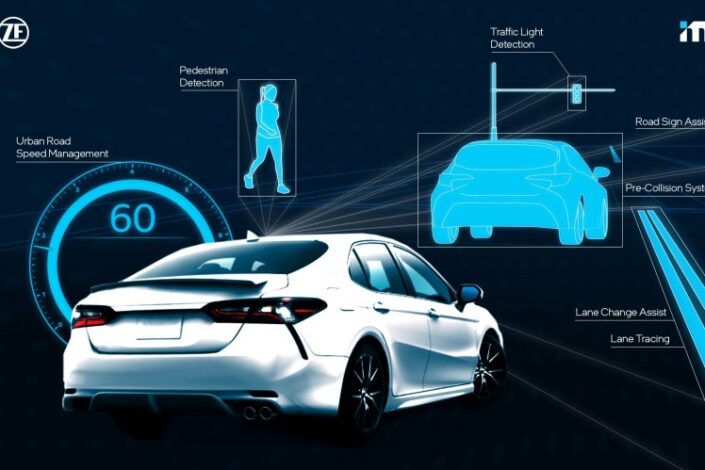ZF and Mobileye, an Intel company, have been chosen by Toyota Motor Corp to develop and supply advanced driver assistance systems (ADAS) for use in multiple vehicle platforms starting in the next few years. As part of the agreement, ZF, a leading producer of automotive cameras driven by Mobileye technology, will also supply its Gen21 mid-range radar and be responsible for the integration of camera and radar in Toyota vehicles.
“Mobileye is delighted to be working with ZF to develop leading driver assistance and safety technology for Toyota, the world’s largest auto maker,” said Professor Amnon Shashua, senior VP of Intel and president and CEO of Mobileye.
Toyota is the latest auto maker to have chosen to work with ZF and Mobileye as a result of both companies’ innovative approach to improving road safety through computer vision and machine learning-based sensing, localization, mapping and best-in-class lateral vehicle control technology for systems such as lane keeping and lane centering.
“ZF looks forward to working closely with Toyota and Mobileye to develop advanced safety systems designed to meet global safety regulations,” said Christophe Marnat, executive vice president, Electronics and ADAS division at ZF. “Our innovative technologies will deliver outstanding performance and robustness for fusion-based systems and ADAS functions.”
ZF and Mobileye will collaborate closely to produce advanced camera technology integrated with ZF radar technology to power key ADAS platforms in Toyota vehicles. Mobileye’s EyeQ4 application-specific vision computing system-on-a-chip (SoC) will be combined with ZF’s Gen21 mid-range radar technology to precisely interpret the environment around Toyota vehicles. Together, these technologies will help prevent and mitigate collisions while yielding best-in-class lateral and longitudinal vehicle control.
ZF says its Gen21 mid-range radar is a high-performance 77GHz front radar designed to meet 2022+ Euro NCAP 5-Star Safety Ratings and enable L2/L2+ automated driving functions. It is scalable to vehicle manufacturer needs and offers both a wide field of view at low speeds to assist in pedestrian detection to support systems like automatic emergency braking (AEB) and a longer detection range at high speeds for systems like adaptive cruise control.


